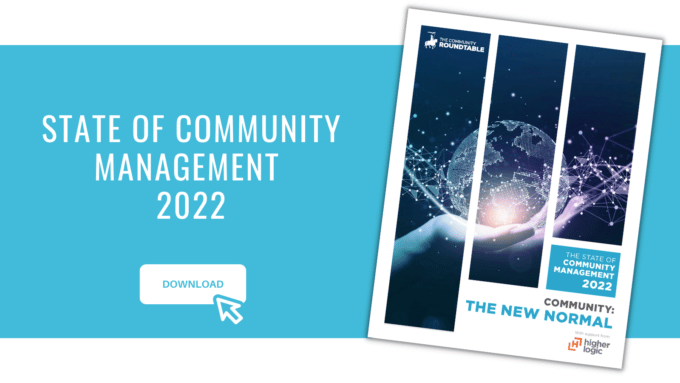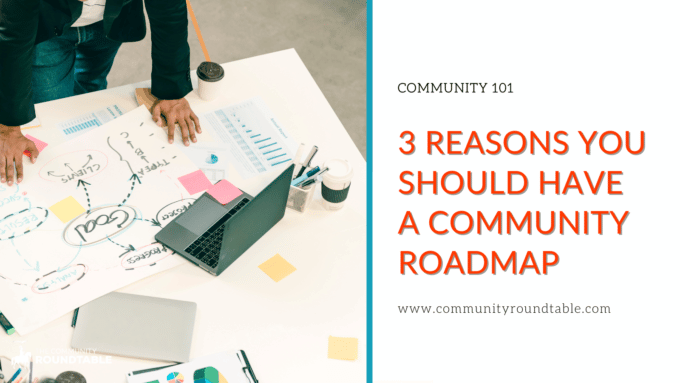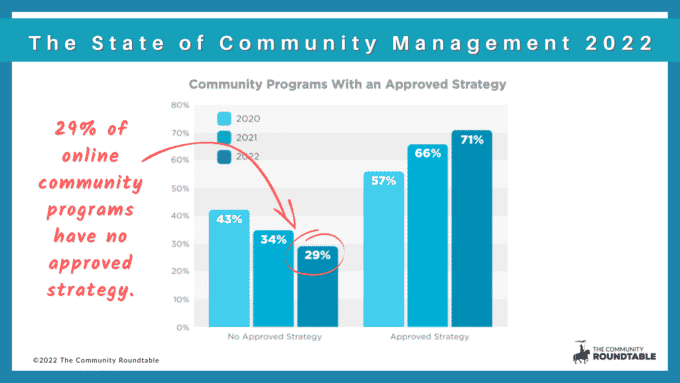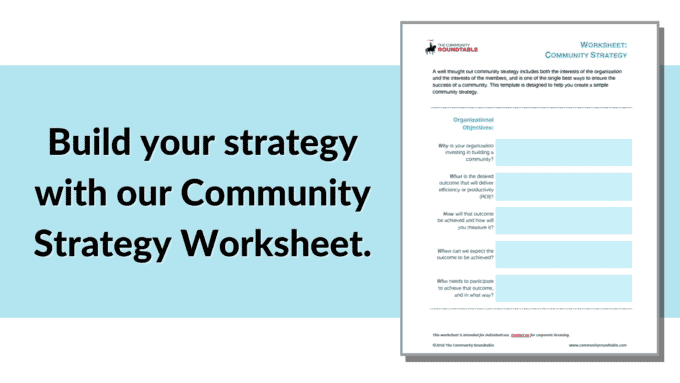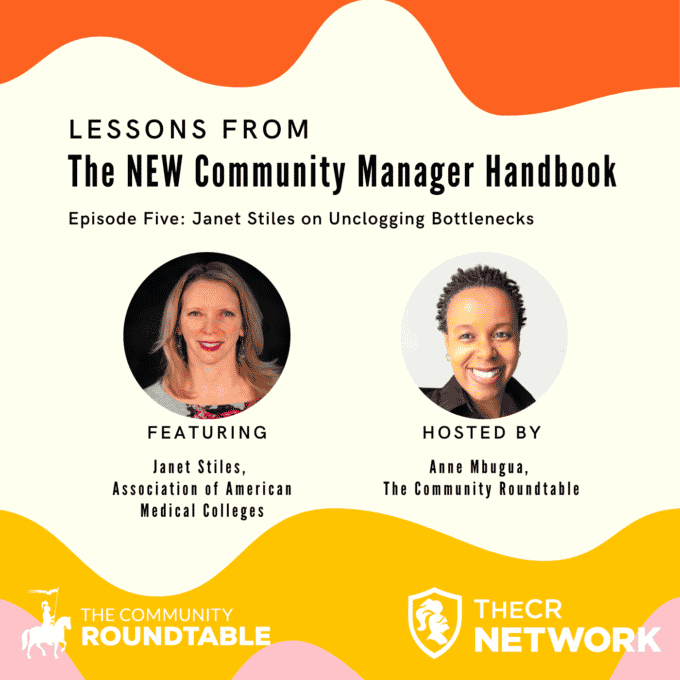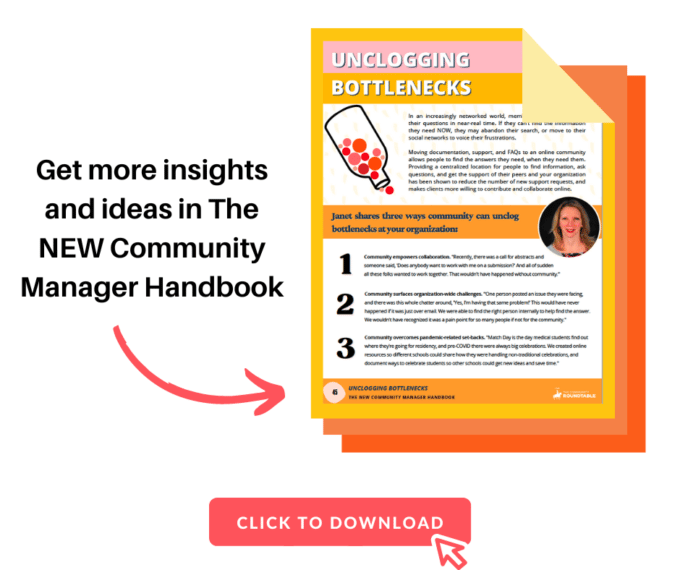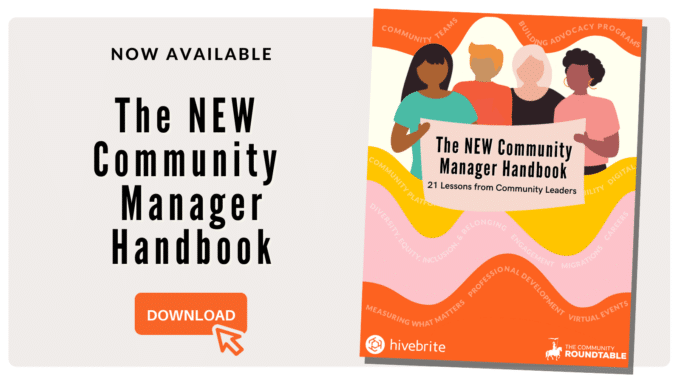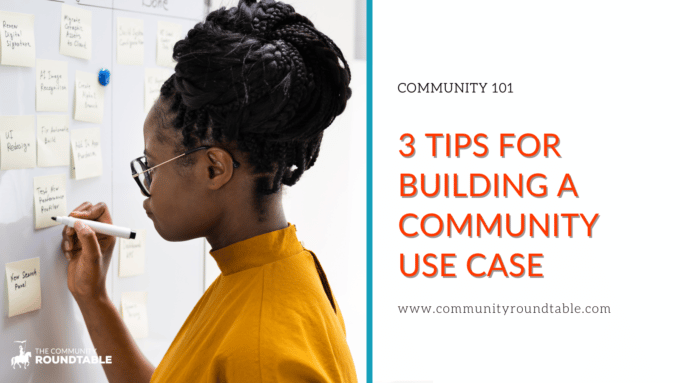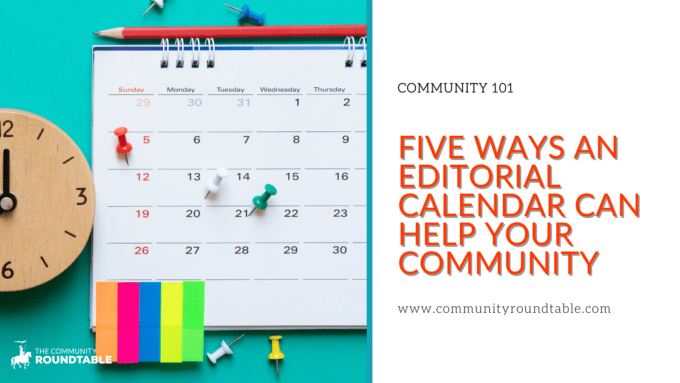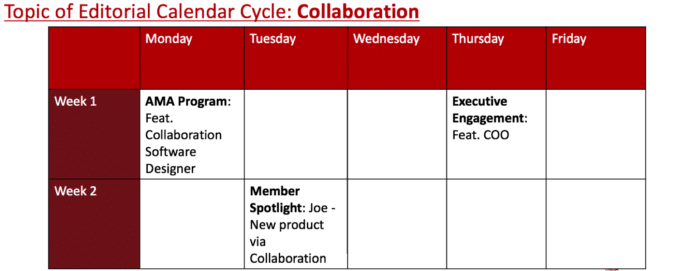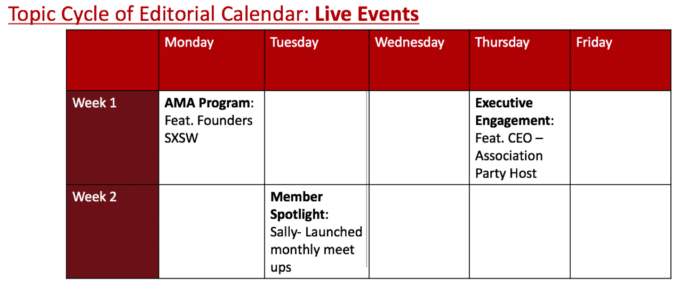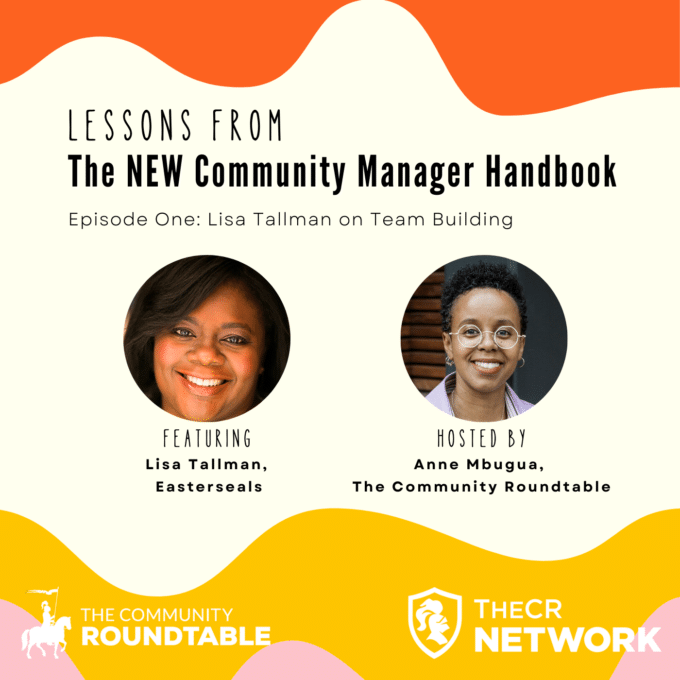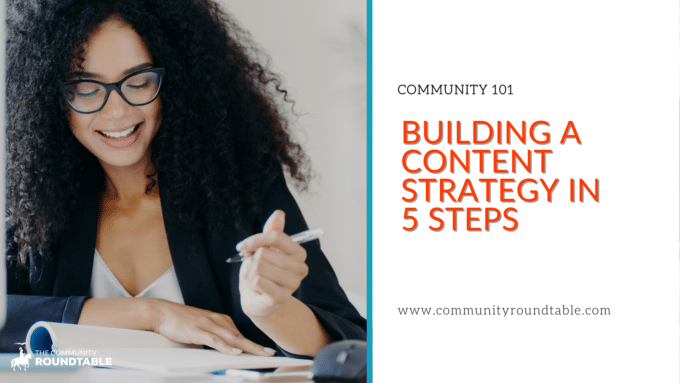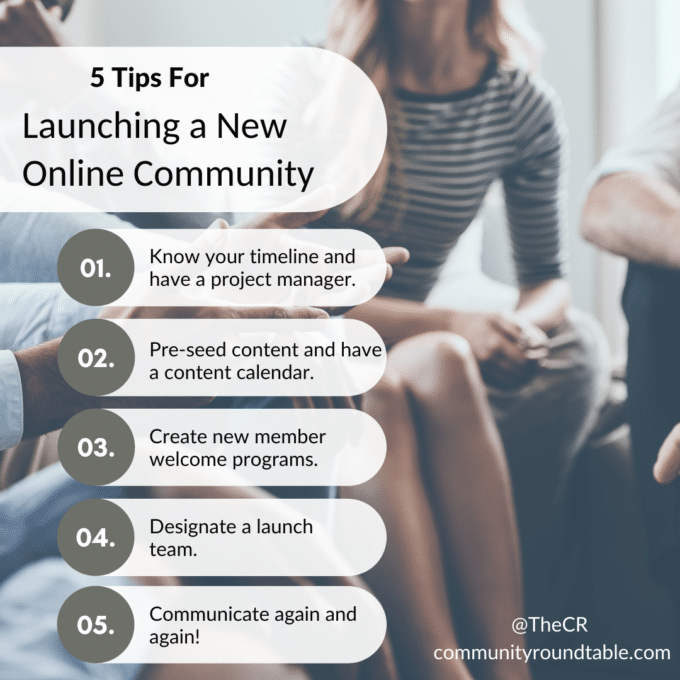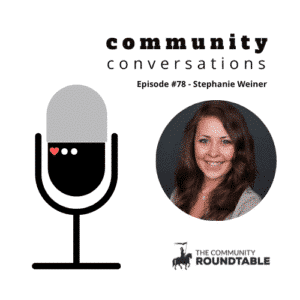The Community Maturity Model™’s Leadership competency includes executive sponsorship, participation in a community program, emergent community leadership, and ties into broader organizational ecosystems.
Leadership programs (a.k.a., advocacy, MVP, and superuser programs) are key to successful communities — they directly correlate with higher engagement, greater ability to measure value, and robust executive participation.
Where are your SMEs?
Our 2022 State of Community Management research shows that while most community leadership programs include customers (73% in 2022), not enough use internal subject matter experts (SMEs): Only 45%. This is a missed opportunity; you have SMEs in your organization, you should leverage their expertise and talents.
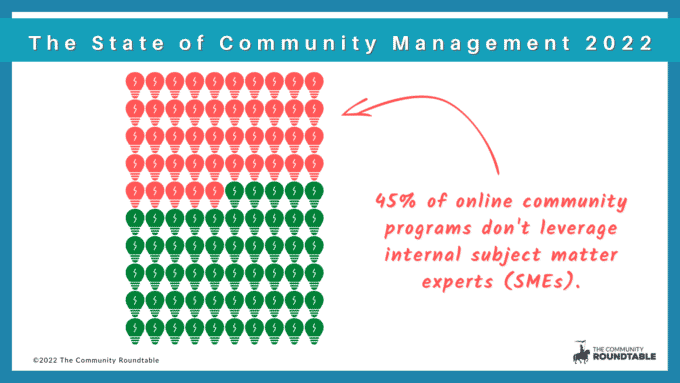
Involving SMEs in the community allows them to meaningfully contribute, showcase their knowledge, and create connections. Creating connections was the top goal of community leadership programs per this year’s survey, with 77% of participants citing this as a goal. SMEs also contribute to the other community leadership program goals, including advocacy (71%) and moderation support and capacity (54%).
Start a community leadership program!
If you don’t have a superuser program that leverages subject matter experts in place, get started. Our research shows when a member of a community shifts from a passive recipient of information to an active participant, their activity increases by more than 10x. Their ROI — the return they get for the time invested — increases by over 200%.
Quick Subject Matter Expert Wins
The easiest way to get subject matter experts involved in your community program is to highlight content they have already created. Leveraging existing content and sharing it with a wider audience is the lightest lift – and quick path to approval.
Did someone lead a webinar? Post the recording in full and then edit it into clips that you can feature as standalone videos, blog post content, and in newsletters or on social. Turn a podcast episode into a tactical how-to blog post or infographic. Even re-printing relevant articles or case studies from subject matter experts provides a mutual benefit for your community members, and the expert themself.
The final step is to tie the subject matter expert back to their content. Ask them to share their perspective in the comments, to provide an additional benefit for members.
Get more community ideas and advice in our 2022 State of Community Management report:
